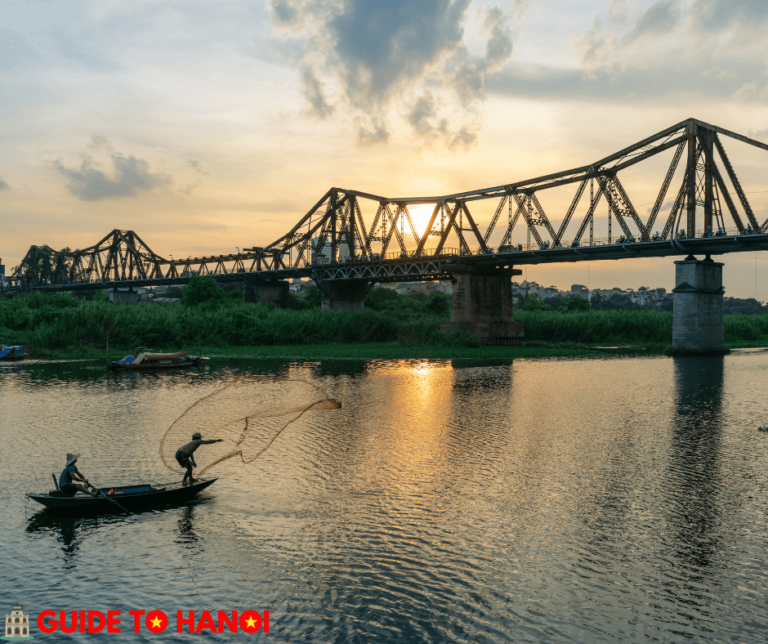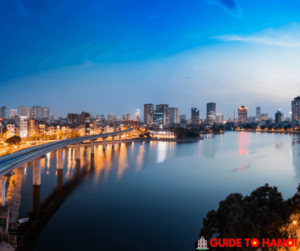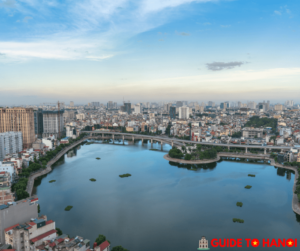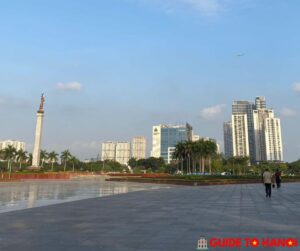Red River
The Red River, or as locals lovingly call it, “Sông Hồng,” is more than just a body of water; it’s the lifeblood of Hanoi, shaping the city’s history, culture, and daily life. Let’s dive into the story of this iconic river from Hanoi’s unique perspective.
A Tale of Two Banks
Stretching over 1,100 kilometers, the Red River flows through Hanoi, dividing the city into two distinct parts: the bustling urban area on the east bank and the tranquil countryside on the west bank.
Stroll along the riverbanks to witness this stark contrast and get a glimpse into the dual nature of Hanoi’s charm.
The Legend of the Red River
Legend has it that the Red River owes its name to the blood the ancient Vietnamese people shed in their struggle against invaders.
Although the river’s waters no longer bear a red hue, its historical importance as a symbol of resilience and determination remains deeply embedded in local culture.
The Red River and Hanoi’s Economy
Beyond its cultural significance, the Red River is crucial to Hanoi’s economy.
For centuries, it has been a vital trade route, facilitating the transportation of goods and connecting Hanoi to the rest of northern Vietnam.
Today, the river supports local livelihoods, flourishing fishing and agriculture along its banks.
The Red River’s Floods: A Blessing or a Curse?
While the Red River sustains life in Hanoi, it also poses a threat during the rainy season, causing floods that can disrupt daily life.
Despite the challenges, the river’s floods are also seen as a blessing, as they replenish the soil and support the region’s agricultural activities, earning it the nickname “The Mother River.”
Bridges Over Troubled Waters
Crossing the Red River are several iconic bridges, each with its own story.
From the historic Long Bien Bridge, a testament to French colonial architecture, to the modern-day Nhat Tan Bridge, these bridges connect the city and symbolize Hanoi’s resilience and progress.
The Red River: A Source of Inspiration
Over the years, the Red River has inspired countless artists, poets, and writers with its beauty and historical significance.
Its tranquil waters and picturesque landscapes have been captured in paintings, poems, and songs, making it a source of inspiration for generations of Hanoians.
Preserving the Red River: Hanoi’s Responsibility
As Hanoi grows and develops, preserving the Red River’s ecosystem has become a top priority.
Steps are being taken to safeguard the river against pollution and degradation, ensuring its beauty and benefits endure for generations.
Conclusion
The Red River is more than just a geographical feature; it symbolizes Hanoi’s rich history, cultural heritage, and enduring spirit.
Whether you’re admiring its beauty from the riverbanks or crossing one of its iconic bridges, the Red River will leave a lasting impression during your visit to Hanoi.

| Aspect | Description |
|---|---|
| Length | 1,100 kilometers |
| Significance | Divides Hanoi into urban and rural areas |
| Legend | Named after ancient Vietnamese bloodshed |
| Economy | Vital trade route; supports fishing and agriculture |
| Floods | It can disrupt life but replenishes the soil; “The Mother River.” |
| Bridges | Iconic structures connecting the city |
| Inspiration | Source of inspiration for artists, poets, and writers |
| Conservation | Efforts to protect against pollution and degradation |
Does the Red River flow through Hanoi?
Yes, the Red River flows through Hanoi, dividing the city into two distinct parts.
Is Hanoi on the bank of the Red River?
Yes, Hanoi is situated on the bank of the Red River.
Is the Red River the largest river in Vietnam?
No, the Red River is not the largest in Vietnam.
It is one of the major rivers, but the Mekong River is the largest in the country.
Why is the Red River in Vietnam important?
The Red River is important in Vietnam for several reasons.
It has been a vital trade route for centuries, supporting agriculture and fishing along its banks.
It also holds cultural significance, symbolizing resilience and determination in Vietnamese history and folklore.




